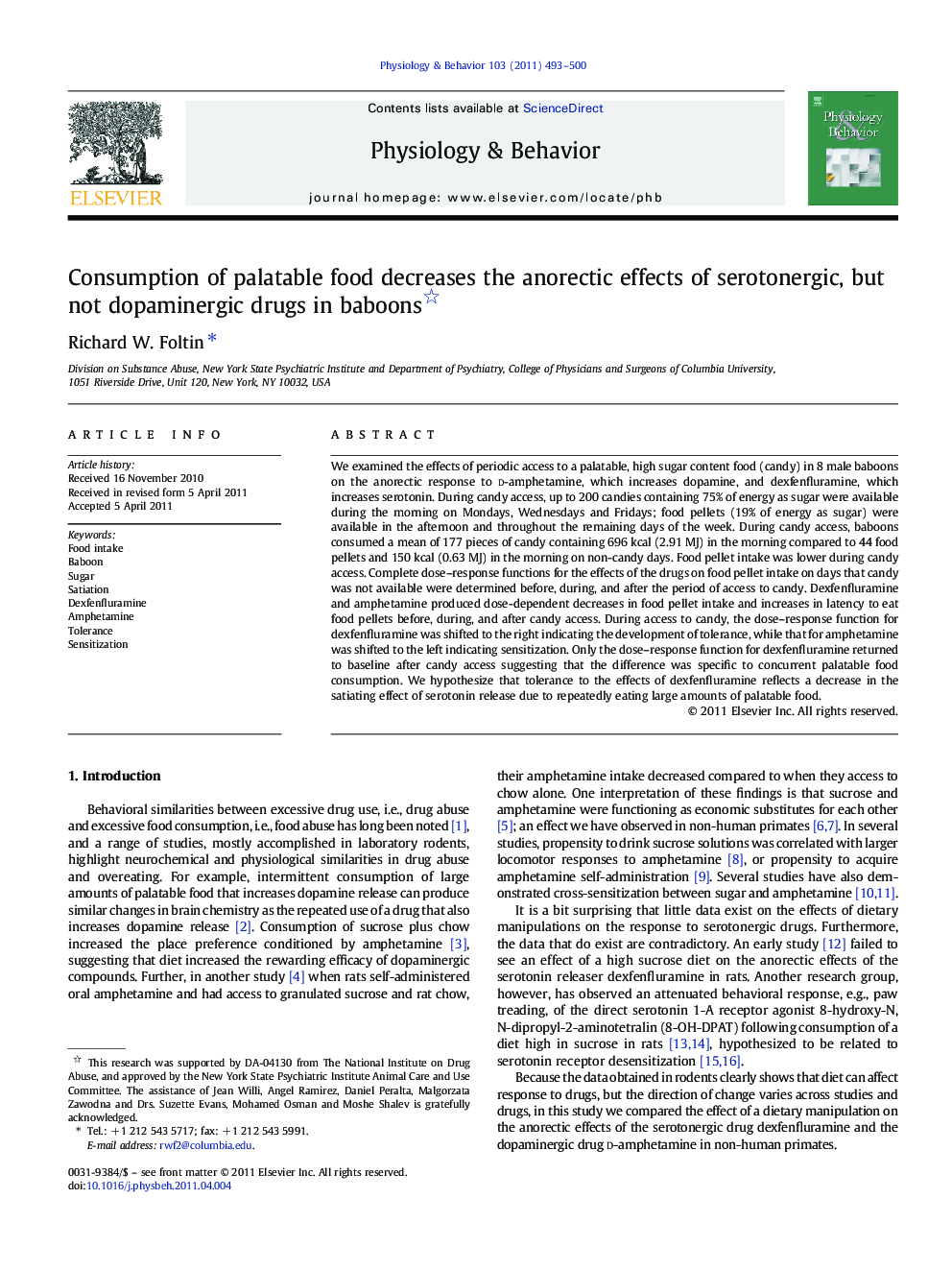| Article ID | Journal | Published Year | Pages | File Type |
|---|---|---|---|---|
| 5925756 | Physiology & Behavior | 2011 | 8 Pages |
We examined the effects of periodic access to a palatable, high sugar content food (candy) in 8 male baboons on the anorectic response to d-amphetamine, which increases dopamine, and dexfenfluramine, which increases serotonin. During candy access, up to 200 candies containing 75% of energy as sugar were available during the morning on Mondays, Wednesdays and Fridays; food pellets (19% of energy as sugar) were available in the afternoon and throughout the remaining days of the week. During candy access, baboons consumed a mean of 177 pieces of candy containing 696Â kcal (2.91Â MJ) in the morning compared to 44 food pellets and 150Â kcal (0.63Â MJ) in the morning on non-candy days. Food pellet intake was lower during candy access. Complete dose-response functions for the effects of the drugs on food pellet intake on days that candy was not available were determined before, during, and after the period of access to candy. Dexfenfluramine and amphetamine produced dose-dependent decreases in food pellet intake and increases in latency to eat food pellets before, during, and after candy access. During access to candy, the dose-response function for dexfenfluramine was shifted to the right indicating the development of tolerance, while that for amphetamine was shifted to the left indicating sensitization. Only the dose-response function for dexfenfluramine returned to baseline after candy access suggesting that the difference was specific to concurrent palatable food consumption. We hypothesize that tolerance to the effects of dexfenfluramine reflects a decrease in the satiating effect of serotonin release due to repeatedly eating large amounts of palatable food.
Research highlights⺠Consumption of large candy meals decreased the anorectic effects of dexfenfluramine. ⺠Decrease in the satiety signal produced by serotonin during meals of palatable food. ⺠Highly palatable food may cause a behavioral override of satiety signals. ⺠Over time larger and larger meals are required to generate a sufficient satiety signal.
